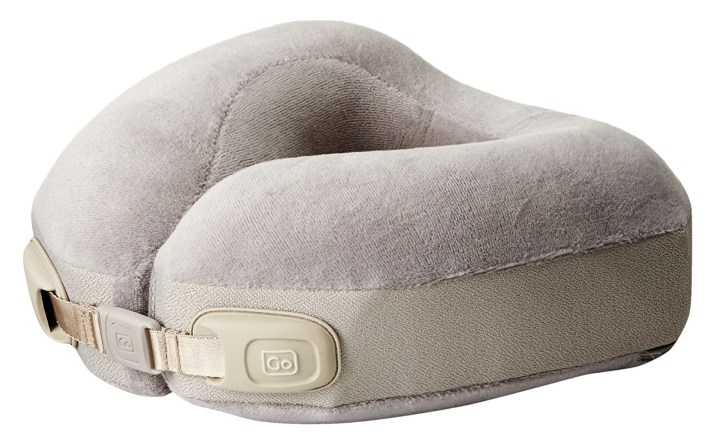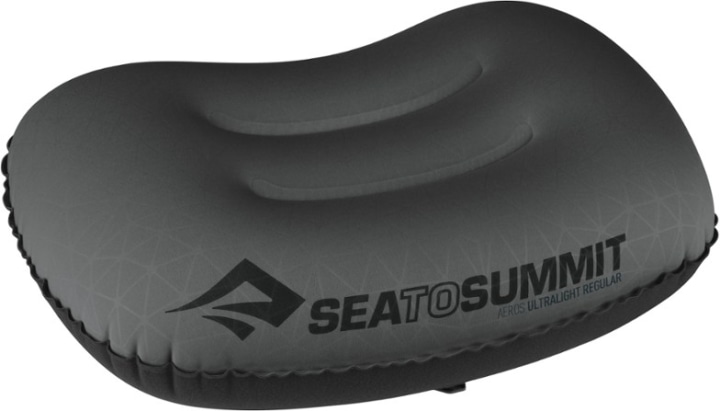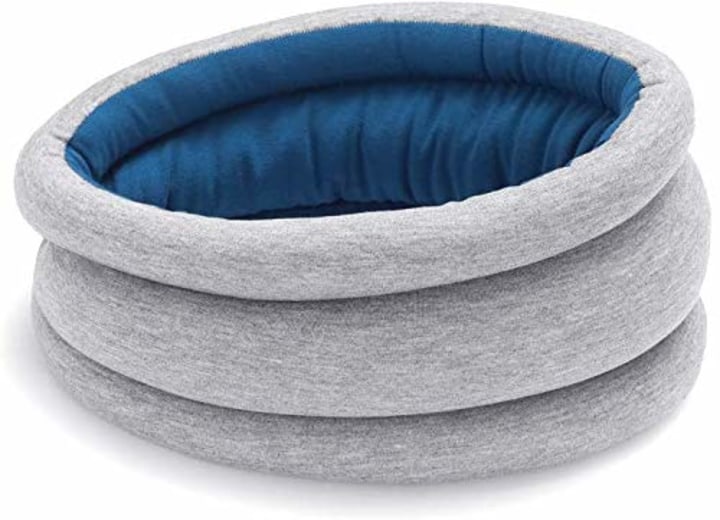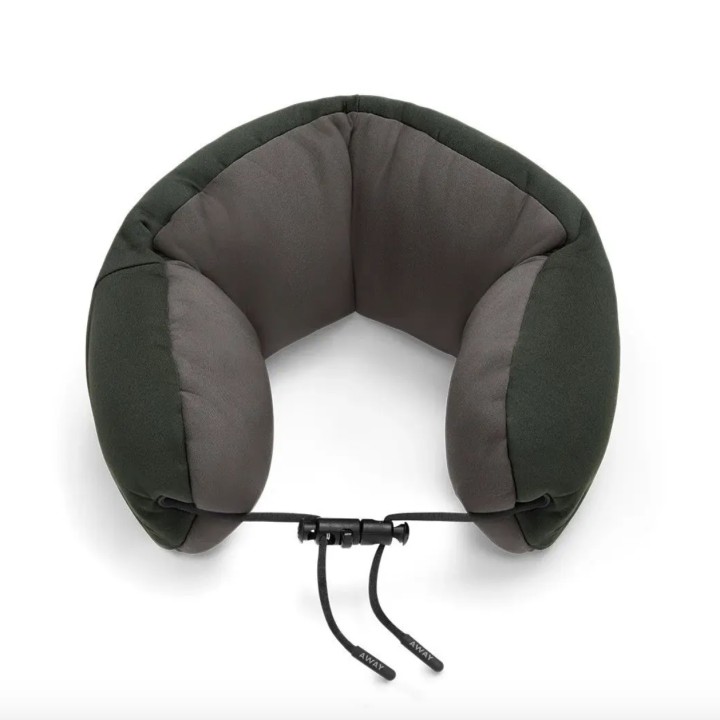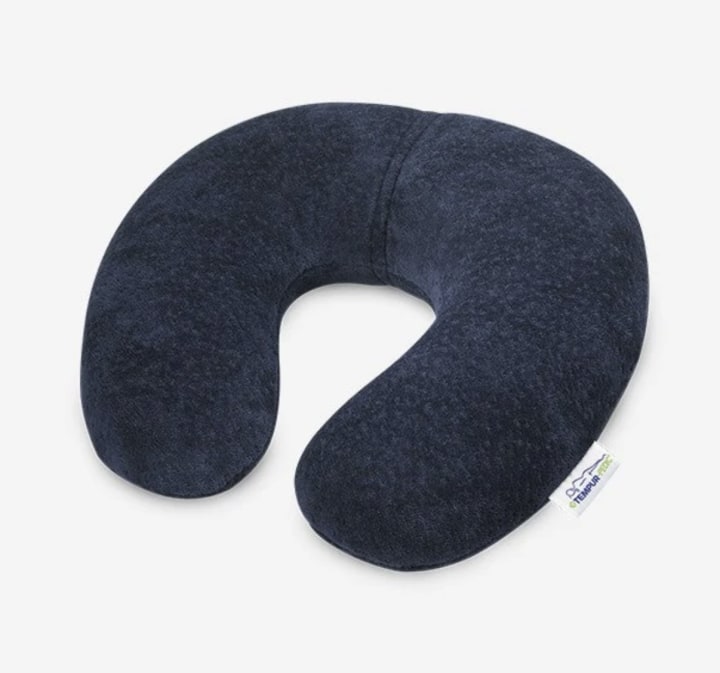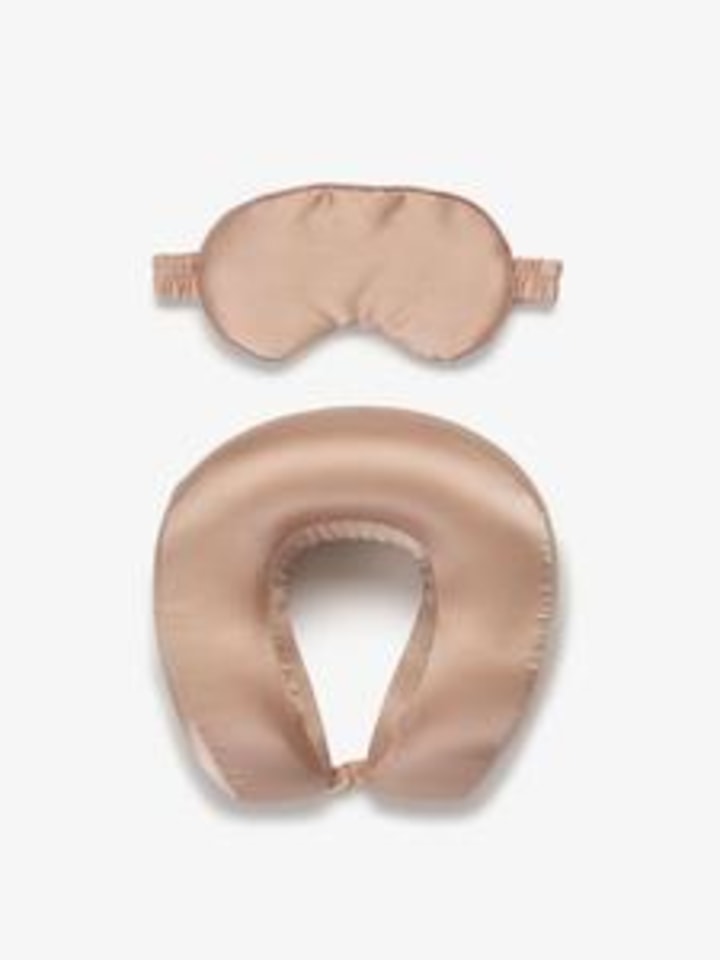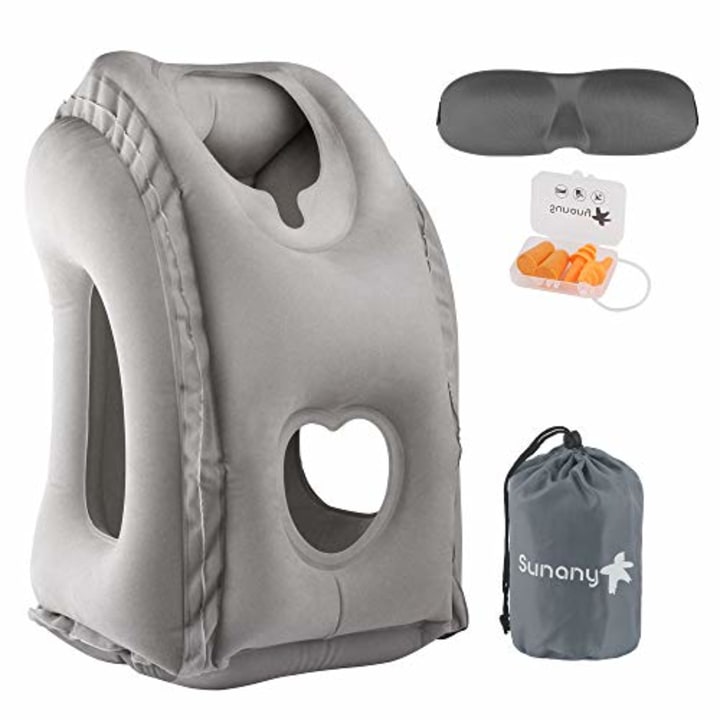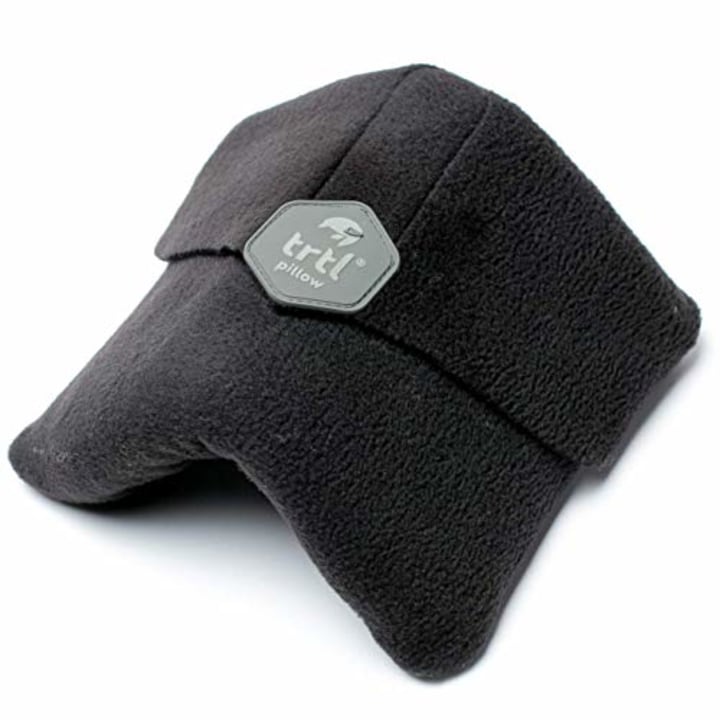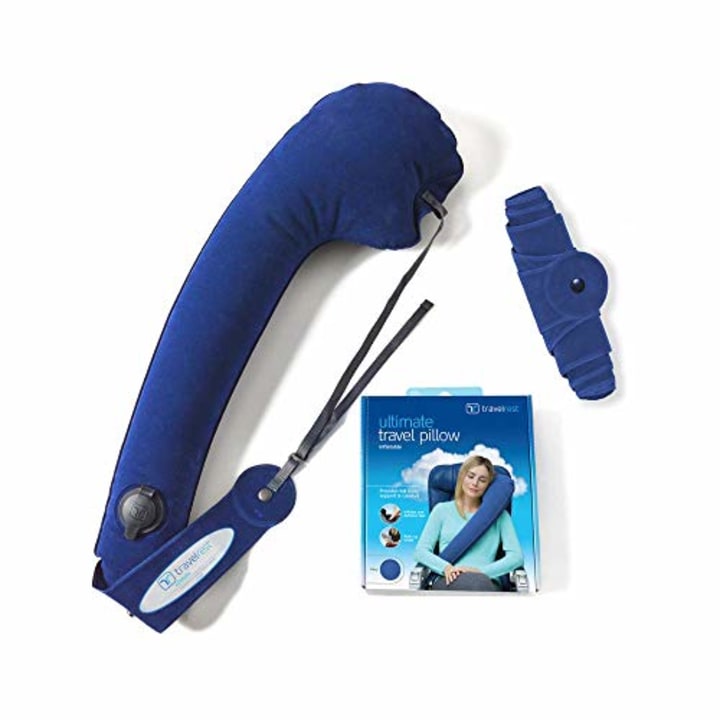With increasing Covid-19 vaccinations and many restrictions lifting across the country, travel experts predict a busy travel season this summer. And with CDC guidelines giving the green light to masked domestic travel for fully vaccinated Americans, people will likely find themselves spending hours on planes, buses, trains and other forms of transportation soon. While sleeping on a plane or train is usually difficult (and uncomfortable), a travel pillow can be a good accessory for getting a bit of shut-eye, especially during long and exhausting travel periods. Since a travel pillow can help you get that much-needed rest, finding the right one matters. We consulted sleep and travel experts about what to consider before buying a travel pillow and compiled some of the best ones.
What are the benefits of travel pillows?
Airplanes and other forms of transportation typically offer tight-fitting seats, which can be uncomfortable for those trying to relax on a multi-hour trip. Additional obstacles are seemingly endless: uncomfortable seats, limited leg room, noisy conversations and frequent overhead announcements. Andrew Varga, MD, a board-certified physician at The Mount Sinai Integrative Sleep Center, said one of the main reasons people struggle to sleep while traveling, especially on international flights with time changes, is because they’re trying to sleep at a time with “low circadian and homeostatic drive,” which means it’s not a time when they would normally sleep, so they’re not as tired. The other factor, according to Varga, is the sleeping space, which is usually cramped and doesn’t let you lie recumbent or change positions, except in typically pricey business- and first-class cabins.
“Not everyone is an equally deep sleeper, and people with any sleep issues at baseline will often have a harder time sleeping in a louder and less comfortable environment — such as an airplane,” added board-certified psychiatrist Alex Dimitriu, MD, a sleep medicine specialist. He noted that posture plays a big role in the discomfort we feel — and as anyone who has slept on a plane knows, “the head tends to fall off to the side or forward, which is both uncomfortable and can cause neck pain, and [can] even make breathing less efficient.”
“Sleeping upright is not at all a natural position,” said Mayank Shukla, MD, a board-certified pulmonologist and sleep medicine specialist in New York City. “Our head weighs almost 10 pounds and flops around the neck when sleeping upright, leading to aches and pain with all that muscle strain.”
Experts noted that travel pillows can provide support for the neck and head, alleviating some pain and discomfort when combating an upright sleeping position while traveling. They’re typically portable, lightweight, ergonomically designed and come in different sizes to fit every type of person, plus some have additional high-tech features like temperature regulation. This can be a good tool for frequent flyers, who hope to maintain a semi-regular sleeping schedule when going on trips.
Best travel pillows in 2021
Design Go Ultimate Memory Pillow
Memory foam combines viscosity and elasticity to contour to your body, and this travel pillow option allows it to instantly mold to your neck and shoulders. It has a soft velour cover with a rear grip to help secure it on your seat, and it features an adjustable closure at the front to support your chin and prevent your head from falling forward. Nadine Sykora, founder of the travel blog Hey Nadine, said the pillow’s memory foam offers the ideal amount of support for her head. “I also love the fact that it clips close so it doesn’t slide off or open up while you are sleeping,” she added.
Sea to Summit Aeros Ultralight Pillow
If you prefer a more traditional-style pillow to take on trips, this option by Sea to Summit is inflatable and features a curved bottom that’ll center it over your shoulders. It’s also a pillow you can take on multiple kinds of trips — Bearfoot Theory’s Linda Romero and Kristen Bor typically take these pillows on long flights and backpacking trips. “It packs down into a tiny pocket and inflates with just a couple of breaths of air,” said Romero. “You can vary how much you inflate it too depending on how much cushion you want.”
Ostrich Pillow Light Travel Pillow
Ostrich offers a variety of unique pillow alternatives, from the napping pillow to the mini handy pillow, and their microbead-filled travel one is a good option for travel. It can be worn around your neck, as an eye cover or around your forehead depending on your preferred sleep position. It’s reversible, portable and includes an integrated adjusting cord for a more comfortable and personalized fit.
Away The Travel Neck Pillow
Away’s neck pillow is designed with an antimicrobial finish on the outer fabric and comes with an antimicrobial pouch. It’s available in three colors: Black/Grey, Navy/Gray and Green/Gray. The neck pillow’s interior core is constructed from shredded foam and the exterior is wrapped in a quilted shell. The neck pillow has an adjustable closure in the front so you can customize its fit, and it’s machine washable.
Tempur-Pedic Travel Pillow
Shukla recommends this horseshoe-shaped travel pillow made with the brand’s dense proprietary Tempur material, which is similar to memory foam. It’s medium-firm for those who want more neck support and features a removable and machine washable cover. Tempur-Pedic also backs the pillow with a five-year limited warranty to cover any product defects.
Calpak Neck Pillow and Eye Mask
For long flights or car rides — especially during the day — this matching travel pillow and sleep mask set from Calpak is a stylish option. The exterior fabric is made from silk, which is both soft and can be good for your skin. Michele Farber, MD, a board-certified dermatologist at Schweiger Dermatology Group, previously told us silk is good for acne-prone and sensitive skin, as it does not result in as much friction — and therefore irritation — as other fabrics. The set also comes with a clear carry bag for traveling.
BCOZZY Chin Supporting Travel Pillow
Few things can jolt you awake faster than your head falling forward while you’re seated. This ergonomic option offers an adjustable front loop for chin support and a flat back to avoid pushing your head forward. It’s fully machine washable and features a strap that can be hooked to your luggage or hung up in your car. The pillow comes in multiple colors, including Purple, Pink and Navy, and you can choose between various sizes ranging from Kids Small to Extra Large.
Travelrest Memory Foam Travel Pillow
The Travelrest memory foam pillow has contoured cut-outs to mold with the natural contours of your neck, shoulders and head. It includes a non-slip backing that’ll keep the pillow against your seat, along with an adjustable velcro strap that can customize the fit of the pillow while preventing it from slipping or moving around.
Sunany Inflatable Neck Pillow
If you prefer to lean forward while you sleep, Varga recommended an inflatable pillow that provides support for your head and upper body. The brand for this pillow claims its ergonomic shape can soothe discomfort in your head, neck and shoulders, while the design follows the natural curve of your neck to reduce pressure. It includes a pouch for storage, a matching eye mask and earplugs.
Trtl Travel Pillow
For those who don’t find enough support from traditional U-shaped travel pillows, this unique option features a hidden inner support that can hold your head and neck at any position that’s comfortable for you. You can adjust the support to contour your neck, shoulder or jaw, while the fleece exterior is soft and machine washable. It’s also lightweight and can be compact enough to fit comfortably inside your luggage or travel bag.
Travelrest Ultimate Travel Pillow
This inflatable, wedge-like pillow can be tucked above the shoulder to use as a headrest and goes down across your torso like a messenger bag or down your side to keep it in place. When deflated, it can be rolled up and includes a snap to keep it compact.
What to consider when buying a travel pillow
The best travel pillow is one that you’re most comfortable with. Ideally, Dimitriu said to test out the pillow on a seat similar in size to an airplane seat and see whether it’s comfortable and how it changes shape. “The emphasis for most users should be to see how comfortably the pillow lets you rest with your back to the seat and without your head falling forward,” he said. And while larger pillows tend to provide more cushioning, he noted “airplane seats are tight, and there is such a thing as too much pillow.”
Inflatable vs. non-inflatable
When going on a long-haul trip, most travelers don’t want their pillow to be an extra thing to lug around. “Inflatable pillows may allow for more cushion and can fold to a smaller size,” said Dimitriu, adding that because of this, they won’t take up too much space in your luggage. They’re also typically more adjustable — you can change the amount of air to get more or less firmness, depending on your comfort level.
Non-inflatable travel pillows can include various types of filling material, including memory foam, polyester fiberfill and microbeads. While the different materials can make it easier to find a more comfortable fit, non-inflatable pillows tend to be bulkier than inflatable ones. When it comes to cleaning, both inflatable and non-inflatable pillows typically have removable covers that can be machine washed or spot cleaned.
Portability
Depending on the type of trip you’re taking, the size and portability of your travel pillow can be just as important off a plane as it is on it. Some travel pillows have straps that you can attach to your luggage, while others can be folded to fit inside a small bag. “Think about what situations you want to use the travel pillow in so you can decide what type of pillow will work for you,” suggested Romero. For her and Bor, “a good travel pillow is one that’s comfortable but also packs down small so we can easily stash it away when not in use and pull it out when we need it.”
But for shorter trips, sometimes carrying an additional item can just be a hassle. “Unless I’m traveling 10 or more hours, it’s just another item to bring with me, to pack and lug around, so for any shorter trips, I don’t bother,” said Sykora.
Sleeping position
“Think about how you’d normally like to sleep while sitting up without a pillow,” said Sykora. Before shopping for a travel pillow, she suggested to ask yourself the following sleep style questions:
- Do you like your head leaning to the side, or do you prefer tilting it back?
- Do you like resting your head against a window?
- Do you prefer more head and neck support when you sleep?
Varga noted travelers should consider whether it’s possible to sleep given the constrained space and what sleeping position suits them best. “My sense is most people will aim to sleep sitting upright or with whatever recline the seat offers,” he said. “In that case, something with neck support is probably important.” He mentioned there are also travel pillows with full head immersion, “which allows one to bend forward at the waist and sleep with the head resting on a surface.”
Dimitriu said these new alternatives to the typical neck pillow are possibly “aimed more at stomach sleepers,” especially the inflatable wedge-shaped pillows that rest on the food tray. “For those willing to deal with the size and appearance, these pillows may be a more natural solution for stomach sleepers,” he said.
Catch up on the latest from NBC News Shopping guides and recommendations and download the NBC News app for full coverage of the coronavirus outbreak.
Source: | This article originally belongs to Nbcnews.com



